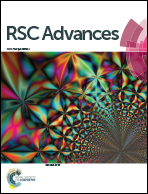Mussel-inspired polydopamine modification of supports for the facile synthesis of zeolite LTA molecular sieve membranes†
Abstract
Inspired by the bio-adhesive ability of the marine mussel, a simple, versatile, effective and green synthesis strategy was developed to prepare dense, phase-pure and reproducible zeolite molecular sieve membranes by using polydopamine (PDA) as a novel covalent linker. Through the formation of strong non-covalent and covalent chemical bonds, zeolite LTA nutrients can be attracted and bound to the support surface, thus promoting the nucleation and seeding-free growth of uniform, well-intergrown and phase-pure zeolite membranes. The zeolite LTA membranes prepared on PDA-modified Al2O3 disks were evaluated in single gas permeation and mixed gas separation. It is found that the zeolite LTA membranes prepared on a PDA-modified support showed higher gas separation selectivities. At 373 K and 1 bar, the mixture separation factors of H2/CO2, H2/N2, H2/CH4, and H2/C3H8 are 7.8, 7.2, 6.6 and 18.3, which by far exceed the corresponding Knudsen coefficients. Furthermore, in comparison with the previously proposed chemical modification methods, the modification procedure by PDA is done under a mild environment (simple immersion in buffered aqueous solution of DPA at room temperature), thus it is helpful to prepare zeolite membranes at a large-scale and reduce the costs of the membrane manufacturing.


 Please wait while we load your content...
Please wait while we load your content...